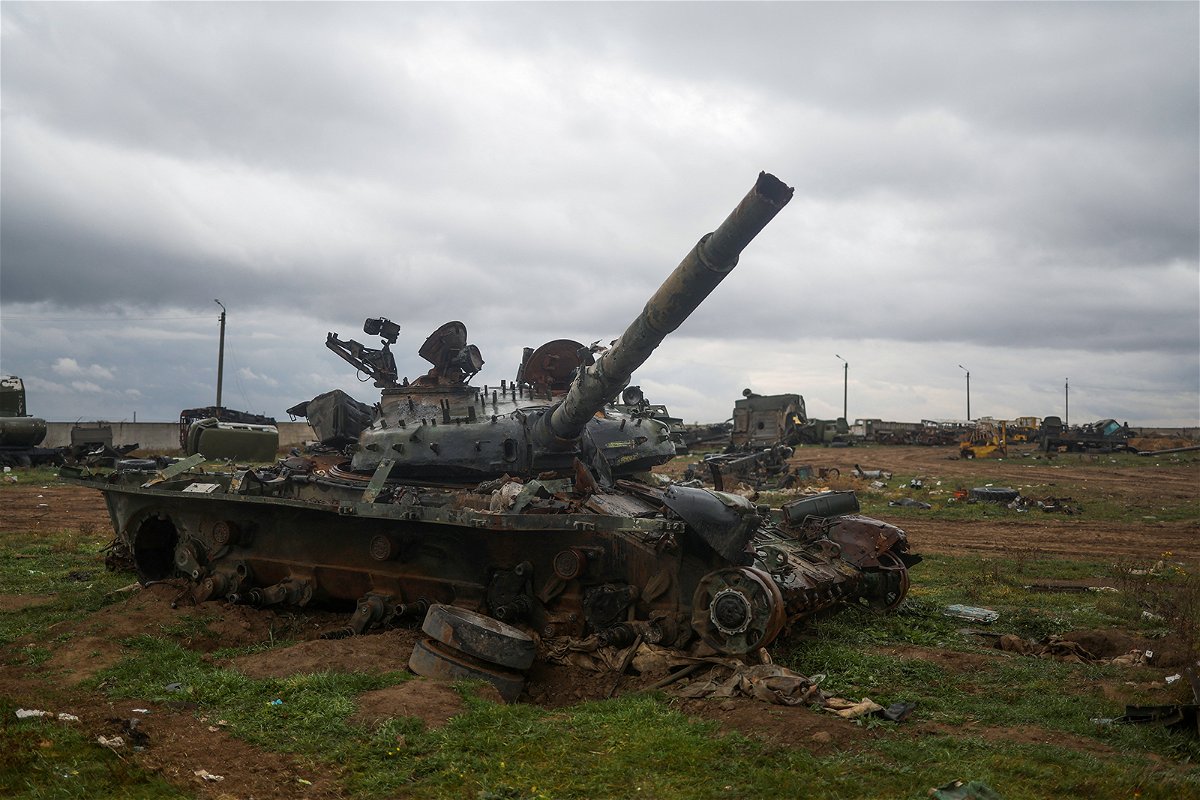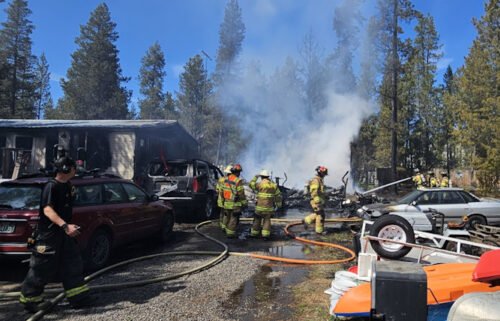Russia may have lost up to half of its operational tank fleet in Ukraine, monitoring group says

A destroyed Russian tank is pictured after Russia's retreat from Kherson
By Brad Lendon, CNN
Russia has potentially lost up to half of all its operational tank fleet since the start of the Ukraine war, according to information collected by a monitoring group, as its military struggles to meet the goals of Vladimir Putin’s invasion.
Oryx, an open source intelligence website, has been collecting visual evidence of military equipment losses in Ukraine since Russia’s invasion began on February 24, 2022.
The group said this week it has verified 1,000 distinct Russian tank losses in the war. It said a further 544 Russian tanks had been captured by Ukrainian forces, 79 damaged and 65 abandoned.
That toll does not include losses Oryx has not been able to visually confirm, said Jakub Janovsky, a military analyst who contributes to the Oryx blog. He estimated the actual toll could be nearer 2,000 tanks.
“Russia started the war with around 3,000 operational tanks … so there is a good chance that Russia has lost one half of (its) usable tanks” Janovsky said.
Tanks have been a major focus of Russia’s invasion of Ukraine and are seen as key for either Russia or Ukraine to take territory on the battlefield.
According to Oryx’s numbers, the tank fight has skewed Ukraine’s way. On Oryx’s count, the 500-plus tanks Ukraine has captured from Russia more than cover the 459 tanks it has lost.
And more tanks are on the way to Ukraine.
Since last month, Kyiv has received pledges of modern tanks from Germany, the United States, Britain and other Western partners.
What’s more, those tanks are seen as having superior technology to the ones Russia is fielding.
Ukrainian officials had repeatedly pleaded with their Western allies to provide modern battle tanks that could be used not only to defend their present positions but to take the fight to the enemy.
Flawed armor
Meanwhile, Russian armor has fared poorly in Ukraine.
Just a few months into the war, analysts noticed a design flaw in Russian tanks that meant a single incoming anti-tank round could explode their ammunition stores. Often, the ensuing blast blows the turrets off the Russian tanks in what has been called a “jack in the box” effect.
Experts have also noted that Russian armor was maintained poorly before the war and some tanks in storage may have been scavenged for parts to keep those sent to the front lines working.
Janovsky said Moscow had about 4,000 tanks in reserve before the war began.
“On paper, Russia still has a lot of tanks, but many were not properly stored and might be hard to reactivate quickly,” he said.
Even assuming they could all be brought into action, Moscow has still lost about 30% of its pre-war tank force, Janovsky said.
Janovsky previously told CNN that manufacturing new replacement tanks will be difficult for Moscow.
“Due to sanctions they might have to replace sensors and electronics with inferior alternatives — and the amount they can produce in the near term is a fraction of what they are losing. Those material losses … are not sustainable,” he said in September.
The total figure for Russia’s equipment losses — when infantry fighting vehicles, armored personnel carriers and other vehicles are added to the tanks — is almost 9,100, Oryx’s website says.
Ukraine’s total equipment losses are 2,934, Oryx says.
The-CNN-Wire
™ & © 2023 Cable News Network, Inc., a Warner Bros. Discovery Company. All rights reserved.



